Application of Bladder Scanner
- 2023-03-03
- 1667
- Sonostar Technologies Co., Limited
Application of Bladder Scanner
Bladder scanner has been the major tool for clinical diagnosis in America and Europe. The application and advantage as follow:
PBS is widely used in:
hospital
surgery
hocus section
ICU
urine section
women and lay section
orthopedics
nerve medicine
child section
healing section
PBS’s latent application area
appertain area
Uric incontinence
guide
SCI/MS
Mentality healing
institution
Resthome
Family tend
SCI/MS
Community medical center
Family、community doctor
Preventive to Urinary of retention and Nursing in Urology
Urinary retention is one of common complication in clinical urology. Those common diseases include: Prostatic hyperplasia, urinary tract obstruction caused by, drug induced, acute urinary tract infection, acute urethritis, including urinary retention caused by the urethra, coma and other causes.
Severe urinary retention may leads to serious bladder over-distension or irreversible bladder injury, upper tract reflux, uronephrosis, renal failure, uraemia, filling urinary incontinence and urethritis, etc. Therefore, it is the very important clinical responsibility to prevention of urinary retention.
Percussion are still used in some clinical part as the method to evaluate the severity of urinary retention. But Percussion is to rely on the experience, and it is uncertainty and blind to judge the UV by listening to the sounds by percussion. Different doctors might have different judgments due to no accurate data to support.
It is inevitable to result in dissension between hospital and patient due to misdiagnosis. Now in USA and European hospitals, bladder scanner is widely used for measurement of UV in their clinical treatment as a scientific basis to prevention and treatment of severe urinary retention.
1.Monitoring urine and prevent urinary retention.
Using bladder scanner for monitoring the UV in bladder is possible to control the UV of bladder in a safety state, and preventthe occurrence of urinary retention in time.
2.Accurate measurement to the UV of bladder is significant basis to schedule
scientific catheterization instead of percussion.
Percussion is traditional method which is uncertain and blind in surmising the UV of bladder, determining the degree of urinary retention, schedule catheterization program and select the time of catheterization. Too early or too late catheterization is unavoidable.
You may get accurate UV of bladder through measuring bladder by using bladder scanner, determining the degree of urinary retention, schedule scientific catheterization program. It is useful to avoid the risk of bladder bleed caused by excessive discharge of urine to extreme urinary retention and provide the basis for the needs of catheterization.
3.Monitor High and low- compliance bladder
High-compliance bladder may easy to result in chronic urinary retention. Use of bladder scanners observe changes of urine in the bladder and provide effective basis for right evaluation before treatment. It is helpful to prevent serious urinary retention and avoiding complications (such as the expansion of upper urinary tract caused by chronic urinary retention, upper urinary tract changes, renal dysfunction, renal failure).
4.Replaced percussion, provide scientific basis for re-training of bladder.
In Medicine, those cases which are involved for re-training of bladder during the treatment are neurogenic bladder caused by spinal cord injury. due to the longer history of diabetes, neurogenic bladder caused by long history diabetes, bladder cancer treatment, the treatment of stroke treatment.
The changes of UV in bladder is scientific basis for scheduling re-training of bladder.
The traditional process for bladder retraining: Regularly drinking water, select the time for induced urine or intermittent catheterization. The timing of training determinate by percussion is not scientific basis, too early or too late catheterization is inevitable.
The use of bladder scanner is possible to get the accurate UV in time and provide accurate info to nurse before determination of timely catheterization.
5.To determine the PVR in bladder and reduce unnecessary catheterization before select the time of prostate operation.
The traditional disposal methods:
Determination of the PVR in patients through the use of catheterization is one of basis for doctors to decide the time of prostate surgery.
Since new instrument-bladder scanner comes out, the use of bladder scanner with advantage of non-invasive and fast may determine the accurate PVR in bladder, reducing the unnecessary catheterization. This is great helpful for doctors to decide the time of surgery.
Progressive:
Catheterization is an invasive, likely to cause urethral injury, infection and patient discomfort. Its operation is relatively complex and not good to repeat its operation.
The use of non-invasive bladder scanners may detect PVR in patients without any injury and discomfort, avoiding unnecessary catheterization and urethral injury, infection, risk of complications. Using bladder scanner is simple and easy to repeat in its operation.
Bladder scanner can also be used for evaluation of bladder emptying and the effect of surgery after prostate surgery.
Bladder Scanner will be widely used as a necessary tool in decision of timely prostate surgery.
Bladder scanner has become an important tool for clinical diagnosis in Europe and America.
Preventive to Urinary Retention and Nursing in Rehabilitation
Spinal injury, Spastic cerebral palsy, Acute cerebral infarction, Neurogenic bladder and Urinary retention caused by highparaplegia are common disease inrehabilitation dept. and also urinary retention is also one of complication.
Severe urinary retention may lead to over distention of bladder, irreversible bladder injury, upper tract reflux, uronephrosis, renal failure, uraemia, filling urinary incontinence and urethritis. Therefor . prevention of sever urinary retention is very important clinical responsibility to prevent.
At present, percussion still are used in some clinical part as the method to evaluate the severity of urinary retention. But Percussion is to rely on the experience, and it is uncertainty and blind to judge the UV by listening to the sounds by percussion. Owing to no accurate data to support, different doctors might have different judgments. It is inevitable to result in dissension between hospital and patient due to misdiagnosis.
It is blind and not scientific to schedule intermittent catheterization by percussion in bladder re-training plan, which also can not provide you a scientific basis for bladder re-training and not good for timely recovery of bladder voiding function.
Now more and more hospitals in developed countries, accurate evaluation of UV is possible to get by using bladder scanner instead of intermittent catheterization according to percussion. Bladder scanner can provide you a scientific basis in prevention of severe urinary retention.
Preventive to Urinary Retention and Nursing after Anorectal Surgery
The common diseases of anorectum dept. are analsinusitis, analpapillitis, stenosis of colon, anorectal abscess, spasmodic contraction of anal sphincter, anorectal malignant melanoma, anal fissure, archosyrinx, anal tube, rectum, atresia ani, pruritus ani, copracrasia, anal injury, ectopic anus, membranous atresia of anus, anal papillitis, musculi levator ani syndrome, perianal abscess, perianal eczema, perianal cancer, solitary rectal ulcer syndrome, pelvirectal abscess, etc.
Urinary retention is one of the common complications after anorectal surgery. Severe urinary retention may leads to serious surgical complications, such as bladder over-distension, irreversible bladder injury, upper tract reflux, uronephrosis, renal failure, uraemia, urinary retention with overflow incontinence and urethritis, etc. Therefore, prevention of urinary retention is a major responsibility in clinical treatment.
For the moment, percussion is used to estimate the severity of urinary retention as clinical method. But percussion is only depended on experience, to estimate the urine volume by ausculto-percussion. It has uncertainty and blindness. Different doctors might have different diagnosis due to no accurate data to support, it will result in inevitable misdiagnosis and medical dispute.
Percussion has been abolished in developed countries, replaced by bladder scanner to estimate the urine volume, as a scientific method to prevent and cure severe urinary retention.
A. Monitoring the bladder volume after anorectal surgery and prevent urinary retention.
The urine volume in the bladder is a scientific basis to estimate the severity of urinary retention. Using bladder scanner to monitoring the bladder volume and keep the urine volume in a safety range, prevent the occurrence of urinary retention.
B. Using bladder scanner instead of percussion will help you determine bladder volume accurately, schedule catheterization plan, determine suitable time for using percussion for estimating bladder volume, the severity of urinary retention and the time for bladder re-training or catheterization have uncertainty and blindness. It is in inevitable to untimely catheterization.
To get accurate volume before determine the severity of urinary retention by using bladder scanner will help you to make re-training plan of bladder or catheterization plan, reducing the hematocele risk in bladder due to extreme urinary retention and excessive discharge of urine. Using Bladder scanner provides the basis for need of catheterization.
Bladder scanner has been the necessary instrument for clinical diagnosis in America and Europe.
Preventive to Urinary Retention and Nursing in ICU
The scope of patients in ICU: (a)critically-ill patients after various delicate surgical operation (especially for preoperative complications such as coronary heart disease, respiratory insufficiency, electrolyte disturbance, intraoperative unstable, hemorrhage or patients who are suffering A ischemia anoxic harm or physical disruption); (b) patients who need of respiration treatment or respiratory support due to acute respiratory distress syndrome(ARDS); (c) multiple organ dysfunction syndrome patients(MODS); (d) patients with cardio-pulmonary-cerebral resuscitation(CPCR); (e) patients with cardiac dysfunction or severe cardiac arrhythmia; (f) acute myocardial infarction; (g) various severe shock; (h) severe combined injuries and multiple injuries;(i) patients with acute drugs and food poisoning, snake or insect bite; (j) patients with drowning, heat stroke or electric shock; (k) patients with severe water, electrolyte and the sour disturbances; (l) patients with acute tubular necrosis (ATN) due to various reasons; (m) organ transplantation patients; (n) acute failure patients with system and organ dysfunction after intensive cure and during recovery stage.
Urinary retention is one of the common complications of ICU. Severe urinary retention may leads to serious surgical complications, such as bladder over-distension, irreversible bladder injury, upper tract reflux, uronephrosis, renal failure, uraemia, urinary retention with overflow incontinence and urethritis, etc. ICU is of three characteristics: therapeutic, monitoring and scientific research. Therefore, prevention of urinary retention is a very important to clinical treatment.
For the moment, percussion is used to estimate the severity of urinary retention as clinical method. But percussion is only depended on experience, to estimate the urine volume by auscultation /percussion. It has the character of uncertainty and blindness. Different doctors might have different diagnosis due to no accurate data to support, it will result in inevitable misdiagnosis and medical dispute. Percussion has been abolished in some hospitals, and replaced by bladder scanner to estimate the urine volume, its accurate scanned result is as a scientific basis for prevention and cure of severe urinary retention.
Preventive to Urinary Retention and nursing in Gynaecology and Obstetric
Urinary retention is one of the common complications after gynaecological and obstetrical surgery, such as abdominal panhysterectomy, cesarean section, extrauterine pregnancy, ovarian tumor, torsion of ovarian tumor, fimbriectomy, ovarian cancer operation, cervix cancer undergoing radical operation might result in urinary retention .
Severe urinary retention may leads to serious complications, such as bladder over-distension, irreversible bladder injury, upper tract reflux, uronephrosis, renal failure, uraemia, urinary retention with overflow incontinence and urethritis, etc. Therefore, prevention of urinary retention is a major clinical responsibility.
For the moment, percussion is used to estimate the severity of urinary retention as clinical method. But percussion is only depended on experience, to estimate the urine volume by ausculto-percussion. It has the character of uncertainty and blindness. Due to there’s no accurate data as support, different doctors might have different diagnosis, it will result in inevitable misdiagnosis and medical dispute. Percussion has been abolished in some hospitals, and replaced by bladder scanner to estimate the bladder volume, as a scientific basis to prevent and cure severe urinary retention.
A. It is very important to get accurate urine volume of bladder and prevent occurrence of of severe urinary retention.
The bladder volume is the scientific basis to estimate the severity of urinary retention. And use of bladder may monitor the changes of bladder volume and help you promptly found urinary retention.
B. For the urinary retention occur after gynaecological and obstetrical surgery, the use of bladder provide you a scientific basis for monitoring the changes of the UV in bladder in time during the clinical treatment and nursing.
The value of urine volume in bladder is the scientific basis to make a catheterization program.
To estimate the bladder volume and severity of urinary retention by percussion has uncertainty and blindness and also be inevitable in untimely catheterization.
Use of bladder scanner may help you to get bladder volume accurately, evaluate the severity of urinary retention, make a scientific time for re-training and catheterization plan, avoid the risk of hematocele in bladder due to extreme urinary retention and excessive discharge of urine. Use of bladder provide you a basis for necessity of catheterization.
Preventive to urinary retention and nursing in Anesthesia Dept
There are common works for anesthesia dept. including:
1.Partial anesthesia, including superficial anesthesia, Local infiltration anesthesia, regional anesthesia, nerve block. Subarachnoid block, epidural block, caudal block, intravenous regional anesthesia.
2.Complete anesthesia, including inhalation anesthesia, intravenous general anesthesia, hypothermic anesthesia, anesthesia, basic anesthesia.
Urinary retention is one of the common complications after anesthesia. Severe urinary retention may leads to serious bladder over-distension or irreversible bladder injury, upper tract reflux, uronephrosis, renal failure, uraemia, filling urinary incontinence and urethritis, etc. Therefore, it is very important clinical responsibility to prevention of urinary retention.
At present, percussion still are used in some clinical part as the method to evaluate the severity of urinary retention. But Percussion is to rely on the experience, and it is uncertainty and blind to judge the UV by listening to the sounds by percussion. Owing to no accurate data to support, different doctors might have different judgments. It is inevitable to result in dissension between hospital and patient due to misdiagnosis.
It is blind and not scientific to schedule intermittent catheterization by percussion in bladder re-training plan, which also can not provide you a scientific basis for bladder re-training and not good for timely recovery of bladder voiding function.
A. It is very important to have accurate evaluation to the UV in bladder and prevention of severe urinary retention.
In order to alleviate the suffering of patients and prevent the occurrence of urinary retention, urination was induced first in clinical advocate, further catheterization will be down if inducement for urination is invalid. Though there are many traditional methods for inducing urination, but the preventive effect of urinary retention is not significant due to difficult to accurately control the time for urination.
Now it is possible for nurse to schedule accurately urination or the time for catheterization by using bladder scanner to evaluate UV in bladder, alleviating greatly the suffering of urinary retention and increasing the satisfaction from patients.
B. Accurately measured the UV in bladder has a scientific base to schedule catheterization program.
The value of urine volume is a clinical scientific basis to make catheterization program.
Percussion does not has a scientific basis in surmising the UV of bladder, determining the degree of urinary retention, schedule catheterization program and select the time for catheterization. Too early or too late catheterization is unavoidable.
On the complications of anesthesia in patients with urinary retention, the use of bladder scanners can let you obtain accurate urine to determine the severity of urinary retention, to make a scientific catheterization program, to select the time for catheterization, to avoid the risk of bladder bleeding caused by excessive discharge of urine in patients with urinary retention. Use of bladder provide you the evidence for the need for catheterization.
Preventive to urinary retention and nursing in Internal Medicine
The common surgery in internal medicine are interventional treatment for coronary heart disease, diabetic neurogenic bladder, rectum and anal canal disease, surgery for women's cardiac intervention, tuberculous meningitis, kidney puncture, etc
Urinary retention is one of the common complications after anorectal surgery. Severe urinary retention may leads to serious surgical complications, such as bladder over-distension, irreversible bladder injury, upper tract reflux, uronephrosis, renal failure, uraemia, urinary retention with overflow incontinence and urethritis, etc. Therefore, prevention of urinary retention is a major clinical responsibility.
At present, percussion still are used in some clinical part as the method to evaluate the severity of urinary retention. But Percussion is to rely on the experience, and it is uncertainty and blind to judge the UV by listening to the sounds by percussion. Different doctors might have different judgments due to no accurate data to support. It is inevitable to result in dissension between hospital and patient because of misdiagnosis. To evaluate urinary retention by percussion has been abolished in some of hospitals. Replaced with bladder scanner to scan for measurement of UV in bladder as a scientific basis to prevent and treat severe urinary retention.
1. To get accurately UV in bladder is very important for prevention of urinary retention.
The value of UV in bladder has a scientific basis to determine the degree of urinary retention.
Use of bladder scanner is helpful to find urinary retention in time.
2. Replaced percussion, to get accurate urine volume, scientifically schedule catheterization program.
The value of urine volume in bladder is a scientific basis to schedule catheterization program.
To guess the UV in bladder by percussion for determination of the degree of urinary retention, schedule catheterization program, choose the time of catheterizationdo not have scientific basis, too early or too late catheterization is unavoidable.
Use of bladder scanner for measurement of UV in bladder may help nurse to get accurate UV and evaluate if it is severe urinary retention before making scientific catheterization program and choose the time for catheterization, avoiding the risk of bladder bleeding caused by excessive discharge of urine with Extreme urinary retention, providing the basis for the need for catheterization.
3. Accurate measurement of UV in bladder provide a scientific basis for
select the time of bladder re-training.
Case 1: Diabetes with bladder dysfunction
To select the timing of urination training is the key to success or failure for patients with bladder re-training to restore their urinary function during functional recovery.
So the value of UV in bladder has a scientific basis to select the timing of bladder re-training.
The traditional process for bladder retraining: Regularly drinking water, select the time for induced urine or intermittent catheterization. The timing of training determinate by percussion has uncertainty and blindness, too early or too late catheterization is inevitable.
Use of bladder scanner can quickly measure the UV in bladder and provides doctors accurate information for determining the time of catheterization. It is helpful for patients to recovery his (her) spontaneous urination earlier under scientific training program.
Bladder scanner has been an important tool for clinical diagnosis in USA and Europe.
Preventive to urinary retention and nursing
in general common surgery
Common diseases in general surgery includes: neck diseases, such as the neck injury, thyroid disease. Breast diseases such as breast cancer, peripheral vascular diseases, such as varicose veins, abdominal diseases, such as inguinal hernia, acute abdomen, such as trauma, peritonitis, gastrointestinal bleeding, gastrointestinal diseases, such as gastric perforation, appendicitis, intestinal obstruction, gastric cancer, colon cancer, anorectal diseases such as hemorrhoids, anal fistula, rectal cancer, Pancreatic spleen diseases, such as the liver, cholecystitis, bile duct stones, pancreatitis, portal hypertension, splenomegaly, congenital pediatric abdominal, retroperitoneal tumor , wound healing, burns cold injury, electrical injury, animal bites, surgical infections, cancer, shock, blood transfusions, fluid balance, enteral parenteral nutrition, major organ failure, ICU, organ transplantation, microsurgery, restoration, surface tumors are all attributable to common surgical diseases.
Urinary retention is one of the common complications after general surgery. Severe urinary retention may leads to serious surgical complications, such as bladder over-distension, irreversible bladder injury, upper tract reflux, uronephrosis, renal failure, uraemia, urinary retention with overflow incontinence and urethritis, etc. Therefore, prevention of urinary retention is a major responsibility in clinical treatment.
For the moment, percussion is used to estimate the severity of urinary retention as clinical method. But percussion is only depended on experience, to estimate the urine volume by ausculto-percussion. It has uncertainty and blindness. Different doctors might have different diagnosis due to no accurate data to support, it will result in inevitable misdiagnosis and medical dispute.
Percussion has been abolished in developed countries, replaced by bladder scanner to evaluate the urine volume, as a scientific method to prevent and cure severe urinary retention.
1. It is helpful to prevent severe urinary retention through accurate UV in bladder
The value of urine volume in bladder has a scientific basis to schedule catheterization program. Use of bladder scanner is good to find urinary retention in time by monitoring the changes of urine volume.
To guess the UV in bladder by percussion for determining the degree of urinary retention, schedule catheterization program, choose the time of catheterization have uncertainty and blindness.
Use of bladder scanner for UV measurement in bladder may help nurse to get accurate UV and evaluate the degree of urinary retention before making scientific catheterization program and choose the time for catheterization, avoiding the risk of bladder bleeding caused by excessive discharge of urine with extreme urinary retention, providing the basis for the need for catheterization.
Nursing for prevention of urinary retention after neurological surgery
Urinary retention is one of common complication in neurological surgery. For instance, stroke and stroke Rehabilitation, acute cerebral infarction, primary lymphoma in central nervous system, equina nerve injury, cerebral angiography, lumbar disc herniation complicated with equina never injury, Parkinson plus syndrome, minimally invasive surgery for clearing away intracranial hematoma caused to hypertensive during nursing, acute myelitis, stroke and so on might occur the risk of urinary retention.
Urinary retention may result in serious bladder over-expansion, irreversible bladder damage, the urinary reflux, hydronephrosis, renal failure, uremia, filling urinary incontinence, urethritis and other serious complications. Therefore, prevention of severe urinary retention is an important clinical responsibility.
At present, percussion still is used in some clinical part as the method to evaluate the severity of urinary retention. But Percussion is to rely on the experience, and it is uncertainty and blind to judge the UV by listening to the sounds with percussion. Owing to no accurate data to support, different doctors might have different judgments. It is inevitable to result in dissension between hospital and patient due to misdiagnosis. As a scientific basis to prevent and treat severe urinary retention, Bladder scanner has been used in some of hospitals for measurement of bladder volume.
1. The changes of urine volume in bladder is important scientific basis to determine the severity of urinary retention. The use of bladder scanner may monitor the UV in bladder and control the UV in safety rang, preventing occurrence of urinary retention in time.
2. Replaced percussion, to get accurate urine volume, scientifically schedule catheterization program.
The value of urine volume in bladder is a scientific basis to schedule catheterization program.
To guess the UV in bladder by percussion for determination of the degree of urinary retention, schedule catheterization program, choose the time of catheterization do not have scientific basis, too early or too late catheterization is unavoidable.
Use of bladder scanner for measurement of UV in bladder may help nurse to get accurate UV and evaluate if it is severe urinary retention before making scientific catheterization program and choose the time for catheterization, avoiding the risk of bladder bleeding caused by excessive discharge of urine with Extreme urinary retention, providing the basis for the need for catheterization.
3. Accurate measurement of UV in bladder provide a scientific basis for select the time of bladder re-training.
The value of urine volume in bladder is a scientific basis to schedule catheterization program.
Percussion is impossible to know accurate UV in bladder. Use of bladder scanner can provide doctors accurate UV in patients’ bladder before selecting the time of bladder re-training.










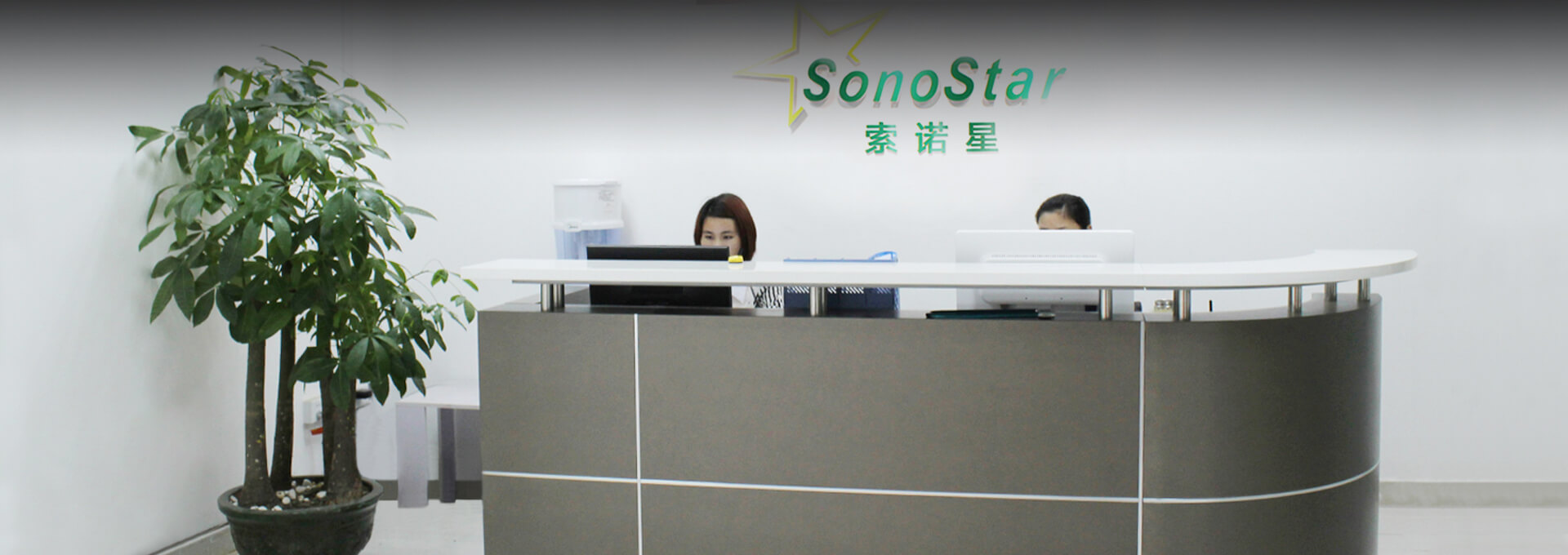
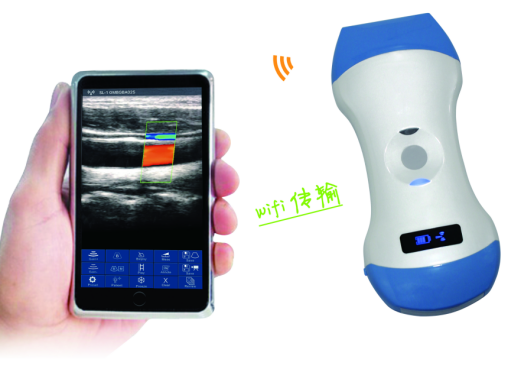
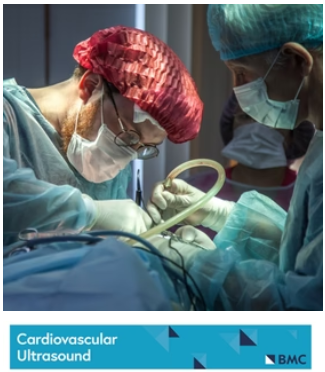
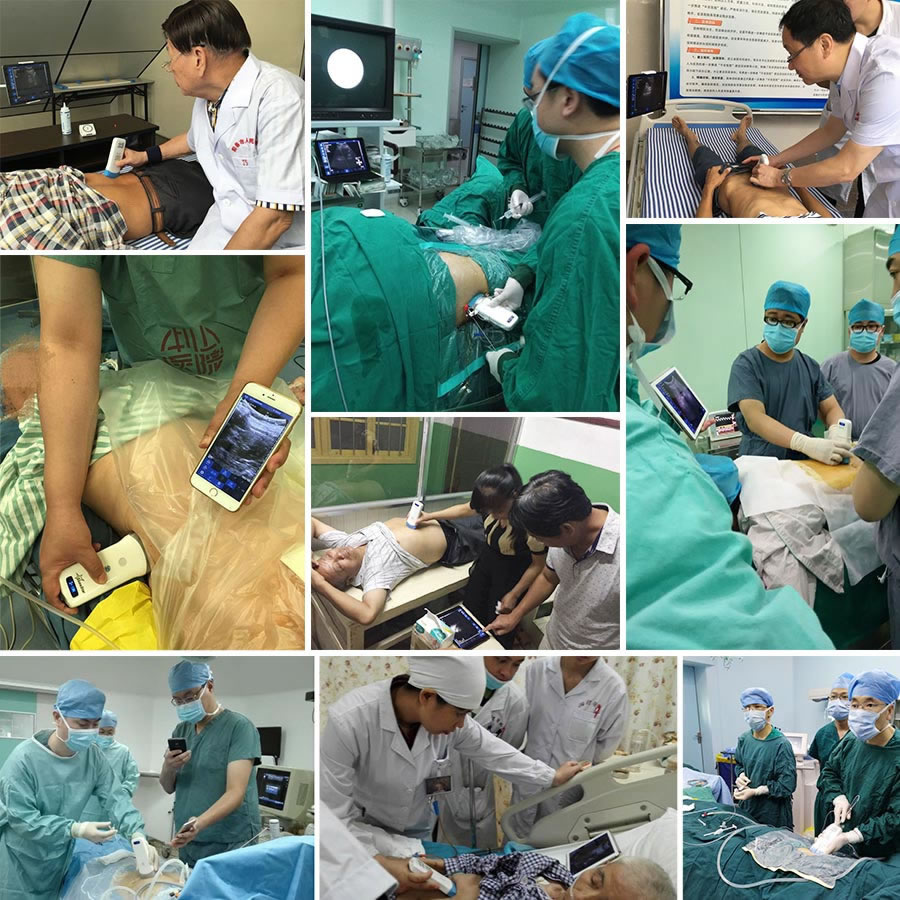
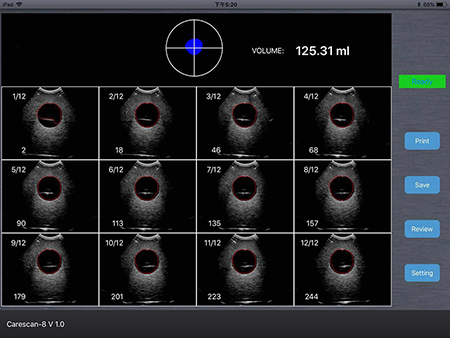

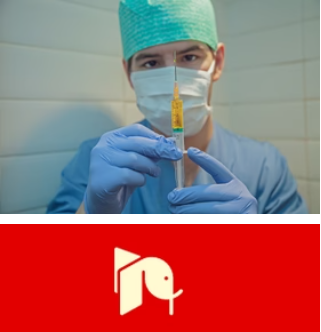
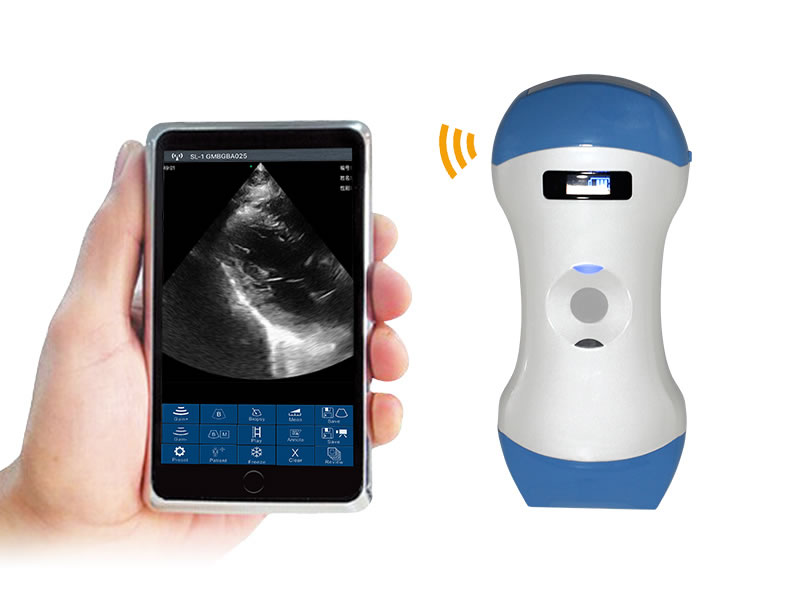
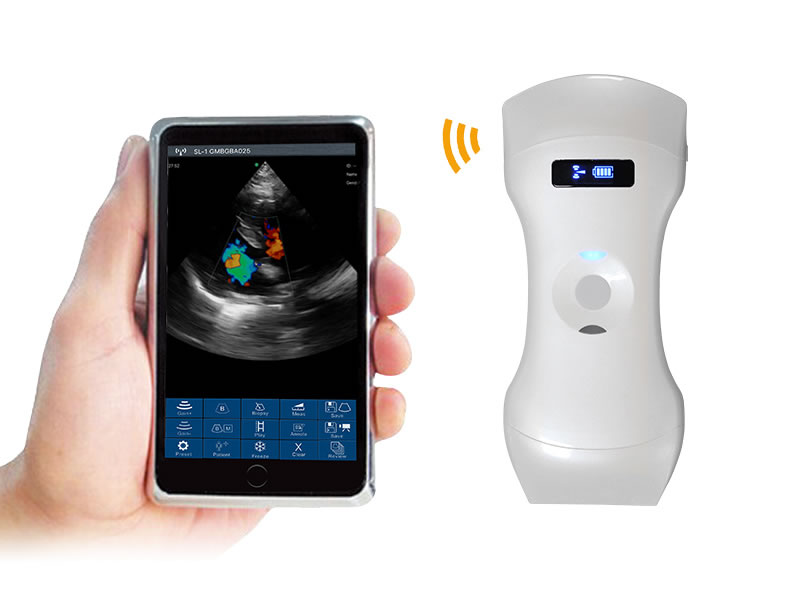
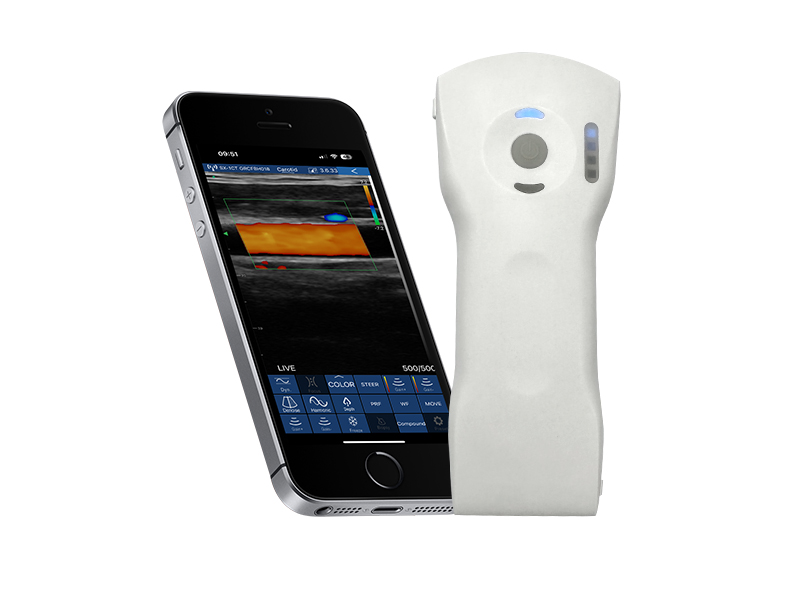
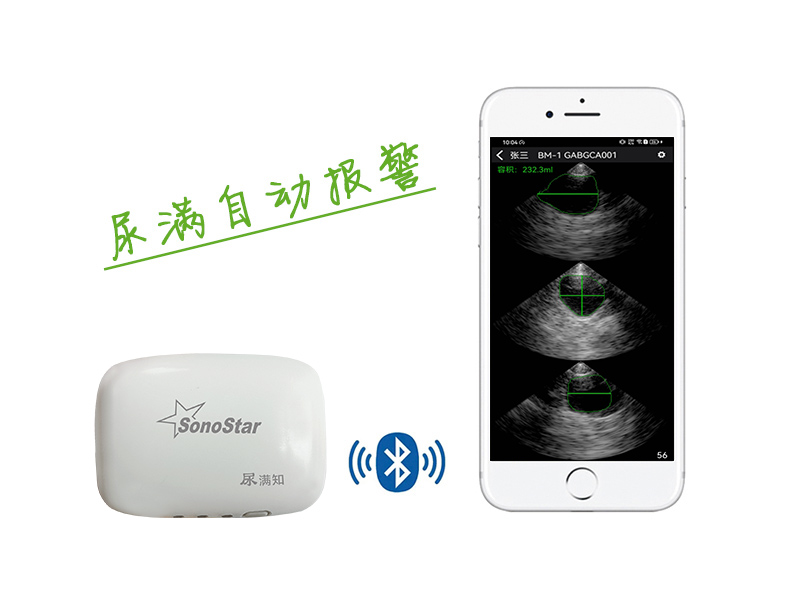



 网站首页
网站首页 产品中心
产品中心 服务支持
服务支持 联系咨询
联系咨询